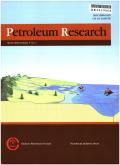油藏数值模拟与人工神经网络混合技术在水驱油藏动态评价中的应用
IF 4
Q1 Earth and Planetary Sciences
引用次数: 0
摘要
采用人工神经网络(ANN)和油藏数值模拟(NRS)技术,对赵州桥油田ZH86区块水驱下油藏动态进行了分析。使用从历史匹配NRS模型中提取的五个输入数据集,使用试错方法训练NRS- ann混合模型。发现NRS-ANN混合模型#46(在输入层,四个隐藏层和输出层分别有5、10、10、6、6和1个神经元)在测试数据集上产生最小的均方根误差。在验证数据上,所选择的NRS-ANN混合模型的预测性能达到最小均方根误差0.0274 m3/day,最大决定系数和相关系数值约为0.9999。研究了区块产液速率(BLPR, m3/day)、区块产水速率(BWPR, m3/day)、区块含水速率(BWCT, %)、区块注水速率(BWIR, m3/day)、区块油藏压力(BRP, bar)作为输入变量与模拟产油量(SOPRH)作为输出变量之间的相关性。SOPRH与BLPR、BWIR、BWCT呈正相关,与BRP、BWPR呈负相关。ZH86区块的B段BLPR增加3.8%,而a段和C段分别下降1.3%和1.6%。产液率的这些变化对应于A段、B段和C段SOPRH的变化分别为4.3%、1.9%和9.7%。将NRS- ann混合模型的预测性能与简单的NRS模型进行了比较。结果表明,NRS- ann混合模型预测产油量的精度是NRS模型的1125倍。结果表明,所提出的NRS-ANN混合方法为水驱采油技术下的油藏动态分析提供了准确、有用的工具。本文章由计算机程序翻译,如有差异,请以英文原文为准。
Application of hybrid numerical reservoir simulation and artificial neural network for evaluating reservoir performance under waterflooding
In the current study, an artificial neural network (ANN) and a numerical reservoir simulation (NRS) technique are used to analyse reservoir performance under waterflooding in the ZH86 block of the Zhaozhouqiao oilfield, China. Using five input datasets extracted from the history-matched NRS model, an NRS-ANN hybrid is trained using a trial-and-error approach. NRS-ANN hybrid model #46 (which has 5, 10, 10, 6, 6, and 1 neurons in the input layer, four hidden layers, and output layer, respectively) is found to produce the minimal root mean square error on the test dataset. On the validation data, the prediction performance of the selected NRS-ANN hybrid model achieves a minimal root mean square error of 0.0274 m3/day and maximal coefficient of determination and coefficient of correlation values of about 0.9999. The correlation between the block liquid production rate (BLPR, m3/day), block water production rate (BWPR, m3/day), block water cut (BWCT, %), block water injection rate (BWIR, m3/day), and block reservoir pressure (BRP, bar) as input variables and the simulated oil production rate (SOPRH) as the output variable is investigated. There is a positive correlation between SOPRH and BLPR, BWIR, and BWCT, and a negative correlation between SOPRH and BRP and BWPR. Segment B of ZH86 block experiences a 3.8% increase in BLPR, while segments A and C show declines of 1.3% and 1.6%, respectively. These variations in the liquid production rate correspond to changes in SOPRH of 4.3%, 1.9%, and 9.7% for segments A, B, and C, respectively. The prediction performance of the NRS-ANN hybrid model is compared with that of a simple NRS model. The accuracy of the NRS-ANN hybrid model in predicting oil production is found to be 1125 times that of the NRS model. Based on these results, it is concluded that the proposed NRS-ANN hybrid provides an accurate and useful tool for analysing reservoir performance under the waterflooding oil recovery technique.
求助全文
通过发布文献求助,成功后即可免费获取论文全文。
去求助
来源期刊

Petroleum Research
Earth and Planetary Sciences-Geology
CiteScore
7.10
自引率
0.00%
发文量
90
审稿时长
35 weeks
 求助内容:
求助内容: 应助结果提醒方式:
应助结果提醒方式:


